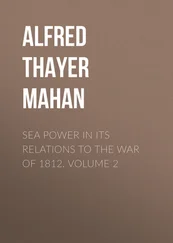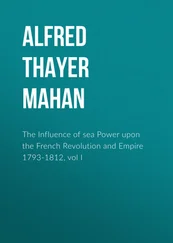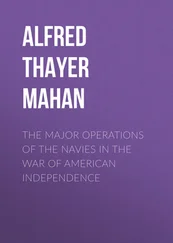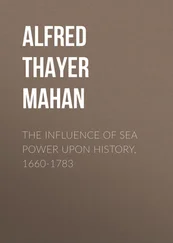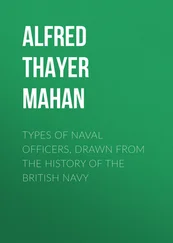Alfred Thayer Mahan - The Life of Nelson, Volume 2
Здесь есть возможность читать онлайн «Alfred Thayer Mahan - The Life of Nelson, Volume 2» — ознакомительный отрывок электронной книги совершенно бесплатно, а после прочтения отрывка купить полную версию. В некоторых случаях можно слушать аудио, скачать через торрент в формате fb2 и присутствует краткое содержание. Жанр: foreign_prose, История, foreign_edu, foreign_antique, на английском языке. Описание произведения, (предисловие) а так же отзывы посетителей доступны на портале библиотеки ЛибКат.
- Название:The Life of Nelson, Volume 2
- Автор:
- Жанр:
- Год:неизвестен
- ISBN:нет данных
- Рейтинг книги:4 / 5. Голосов: 1
-
Избранное:Добавить в избранное
- Отзывы:
-
Ваша оценка:
- 80
- 1
- 2
- 3
- 4
- 5
The Life of Nelson, Volume 2: краткое содержание, описание и аннотация
Предлагаем к чтению аннотацию, описание, краткое содержание или предисловие (зависит от того, что написал сам автор книги «The Life of Nelson, Volume 2»). Если вы не нашли необходимую информацию о книге — напишите в комментариях, мы постараемся отыскать её.
The Life of Nelson, Volume 2 — читать онлайн ознакомительный отрывок
Ниже представлен текст книги, разбитый по страницам. Система сохранения места последней прочитанной страницы, позволяет с удобством читать онлайн бесплатно книгу «The Life of Nelson, Volume 2», без необходимости каждый раз заново искать на чём Вы остановились. Поставьте закладку, и сможете в любой момент перейти на страницу, на которой закончили чтение.
Интервал:
Закладка:
On the afternoon of the 31st another council was held, in which Nelson's plan was finally ratified; he again volunteered his services, which were accepted and his force detailed. As usual, the council was prolific in suggestions of danger. Stewart, who seems to have been present, writes: "During this Council of War, the energy of Lord Nelson's character was remarked: certain difficulties had been started by some of the members, relative to each of the three Powers we should either have to engage, in succession or united, in those seas. The number of the Russians was, in particular, represented as formidable. Lord Nelson kept pacing the cabin, mortified at everything that savoured either of alarm or irresolution. When the above remark was applied to the Swedes, he sharply observed, 'The more numerous the better;' and when to the Russians, he repeatedly said, 'So much the better, I wish they were twice as many, the easier the victory, depend on it.' He alluded, as he afterwards explained in private, to the total want of tactique among the Northern fleets; and to his intention, whenever he should bring either the Swedes or Russians to action, of attacking the head of their line, and confusing their movements as much as possible. He used to say, 'Close with a Frenchman, but out-manoeuvre a Russian.'"
Nelson gave personal supervision to the general work of buoying the Northern Channel. On the morning of April 1st he made a final examination of the ground in the frigate "Amazon," commanded by Captain Riou, who fell in the next day's battle. Returning at about one in the afternoon, he signalled his division to weigh, and, the wind favoring, the whole passed without accident, the "Amazon" leading. By nightfall they were again anchored, south of the Middle Ground, not over two miles from that end of the Danish line. As the anchor dropped, Nelson called out emphatically, "I will fight them the moment I have a fair wind." As there were in all thirty-three ships of war, they were crowded together, and, being within shelling distance of the mortars on Amag Island, might have received much harm; but the Danes were too preoccupied with their yet incomplete defences to note that the few shells thrown dropped among their enemies.
"On board the Elephant," writes Stewart, who with his soldiers had followed Nelson from the "St. George," "the night of the 1st of April was an important one. As soon as the fleet was at anchor, the gallant Nelson sat down to table with a large party of his comrades in arms. He was in the highest spirits, and drank to a leading wind and to the success of the ensuing day. Captains Foley, Hardy, Freemantle, Riou, Inman, Admiral Graves, his Lordship's second in command, and a few others to whom he was particularly attached, were of this interesting party; from which every man separated with feelings of admiration for their great leader, and with anxious impatience to follow him to the approaching battle. The signal to prepare for action had been made early in the evening. All the captains retired to their respective ships, Riou excepted, who with Lord Nelson and Foley arranged the Order of Battle, and those instructions that were to be issued to each ship on the succeeding day. These three officers retired between nine and ten to the after-cabin, and drew up those Orders that have been generally published, and which ought to be referred to as the best proof of the arduous nature of the enterprise in which the fleet was about to be engaged.
"From the previous fatigue of this day, and of the two preceding, Lord Nelson was so much exhausted while dictating his instructions, that it was recommended to him by us all, and, indeed, insisted upon by his old servant, Allen, who assumed much command on these occasions, that he should go to his cot. It was placed on the floor, but from it he still continued to dictate. Captain Hardy returned about eleven. He had rowed as far as the leading ship of the enemy; sounding round her, and using a pole when he was apprehensive of being heard. He reported the practicability of the Channel, and the depth of water up to the ships of the enemy's line. Had we abided by this report, in lieu of confiding in our Masters and Pilots, we should have acted better. The Orders were completed about one o'clock, when half a dozen clerks in the foremost cabin proceeded to transcribe them. Lord Nelson's impatience again showed itself; for instead of sleeping undisturbedly, as he might have done, he was every half hour calling from his cot to these clerks to hasten their work, for that the wind was becoming fair: he was constantly receiving a report of this during the night." It was characteristic of the fortune of the "heaven-born" admiral, that the wind which had been fair the day before to take him south, changed by the hour of battle to fair to take him north; but it is only just to notice also that he himself never trifled with a fair wind, nor with time.
The Orders for Battle, the process of framing which Stewart narrates, have been preserved in full; 30 30 They are to be found in Nicolas's "Despatches and Letters of Lord Nelson," vol. iv. p. 304.
but they require a little study and analysis to detect Nelson's thought, and their tactical merit, which in matters of detail is unique among his works. At the Nile and Trafalgar he contented himself with general plans, to meet cases which he could only foresee in broad outlines; the method of application he reserved to the moment of battle, when again he signified the general direction of the attack, and left the details to his subordinates. Here at Copenhagen he had been able to study the hostile dispositions. Consequently, although he could not mark with precision the situations of the smaller floating batteries, those of the principal blockships were known, and upon that knowledge lie based very particular instructions for the position each ship-of-the-line was to occupy. The smaller British vessels also had specific orders.
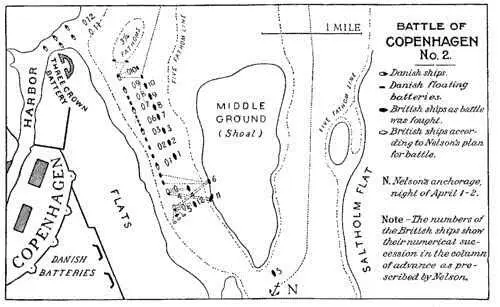
Battle of Copenhagen, Plan Number 2
Taking the Trekroner as a point of reference for the Danish order, there were north of it, on the Danish left flank, two blockships. South of it were seven blockships, with a number of miscellaneous floating batteries, which raised that wing of the defence to eighteen—the grand total being therefore twenty. This was also Nelson's count, except that he put one small vessel on the north wing, reducing the southern to seventeen—an immaterial difference. South of the Trekroner, the Danes had disposed their seven blockships—which were mastless ships-of-the-line—as follows. Two were on the right flank, supporting each other, two on the left, the three others spaced between these extremes; the distance from the Trekroner to the southernmost ship being about a mile and a half. The intervals were filled with the floating batteries. It will be recognized that the Danes treated this southern wing as an entity by itself, of which they strengthened the flanks, relying for the protection of the centre upon the nearness to shoal water, which would prevent the line being pierced.
As thus described, the southern wing covered the front of the city against bombardment. The two northern blockships and the Trekroner did not conduce materially to that; they protected chiefly the entrance of the harbor. It was therefore only necessary to reduce the southern wing; but Nelson preferred to engage at once the whole line of vessels and the Trekroner. It is difficult entirely to approve this refusal to concentrate upon a part of the enemy's order,—an advantage to which Nelson was fully alive,—but it was probably due to underestimating the value of the Danish gunnery, knowing as he did how long they had been at peace. He may, also, have hoped something from Parker's division. Be this as it may, he spread his ships-of-the-line, in the arrangement he prescribed, from one end to the other of the enemy's order.
Читать дальшеИнтервал:
Закладка:
Похожие книги на «The Life of Nelson, Volume 2»
Представляем Вашему вниманию похожие книги на «The Life of Nelson, Volume 2» списком для выбора. Мы отобрали схожую по названию и смыслу литературу в надежде предоставить читателям больше вариантов отыскать новые, интересные, ещё непрочитанные произведения.
Обсуждение, отзывы о книге «The Life of Nelson, Volume 2» и просто собственные мнения читателей. Оставьте ваши комментарии, напишите, что Вы думаете о произведении, его смысле или главных героях. Укажите что конкретно понравилось, а что нет, и почему Вы так считаете.



